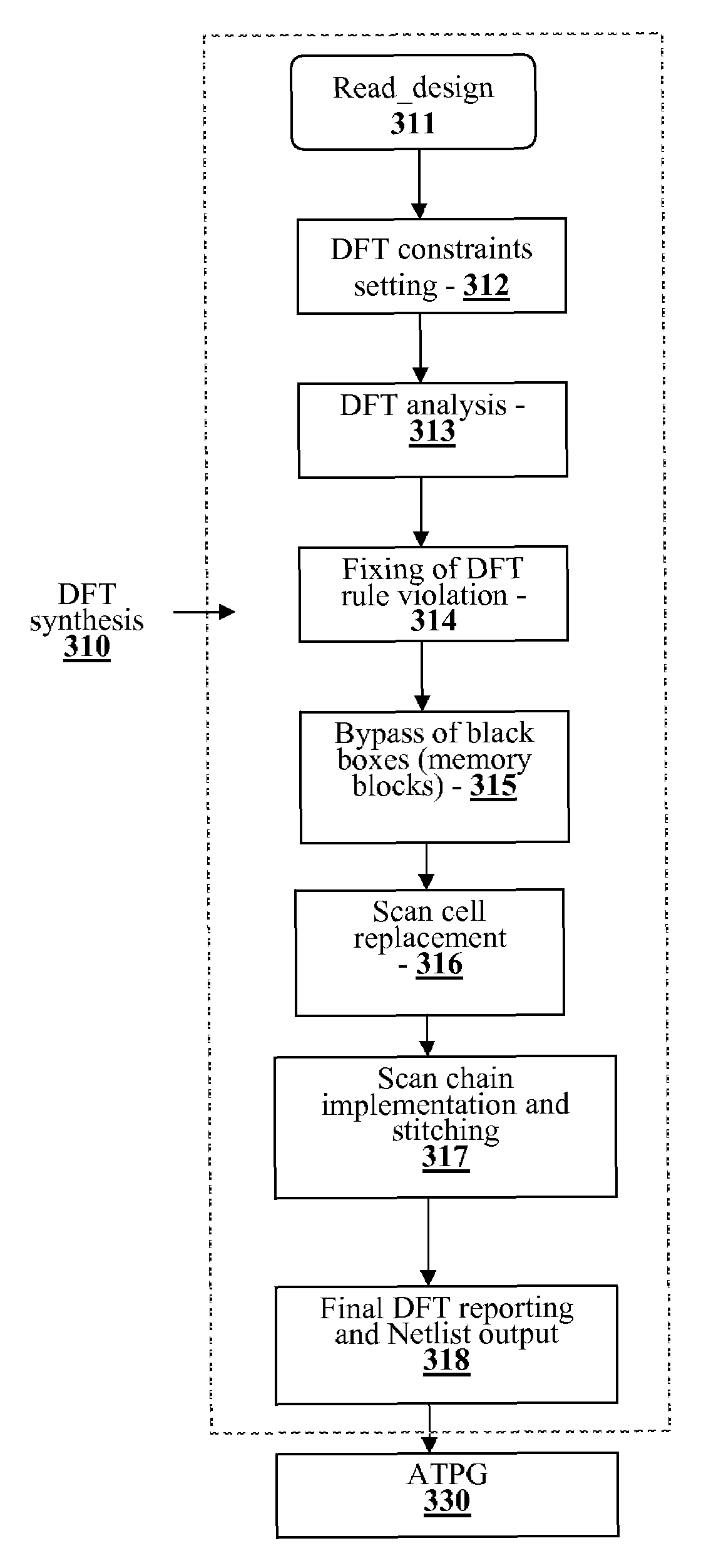Method and system for providing fast design for testability prototyping in integrated circuit designs
a technology of integrated circuit design and fast design, applied in the direction of cad circuit design, program control, instruments, etc., can solve the problems of increasing complexity, increasing criticality, and becoming increasingly more important and challenging, so as to improve the design flow of dft, fast dft prototyping design flow, and short runtime
- Summary
- Abstract
- Description
- Claims
- Application Information
AI Technical Summary
Benefits of technology
Problems solved by technology
Method used
Image
Examples
Embodiment Construction
[0058]FIG. 4 is an illustration of an example of a clock generation block of an IC design. Referring to the Figure, as shown, clock generation block 400 includes a phase-locked loop (PLL) unit 401 and a multiplexer 402. As can be seen from the Figure, the input to the PLL unit 401 includes two functional clock signals func_ck1 and func_ck2, generating an output signal function_clock representing a functional clock signal. The functional clock signal output from the PLL unit 401 is input to the inverting input terminal 403 of the multiplexer 402, while an external test clock signal ext_test_clk is input to the noninverting input terminal 404 of the multiplexer 402. In this manner, the clock signal for the core logic of the IC design comes from the multiplexer 402 selected by the test mode signal test_mode, where the test mode signal test_mode is generated by the test generation block described in further detail below in conjunction with FIG. 5.
[0059]Referring back to FIG. 4, there ar...
PUM
 Login to View More
Login to View More Abstract
Description
Claims
Application Information
 Login to View More
Login to View More - R&D
- Intellectual Property
- Life Sciences
- Materials
- Tech Scout
- Unparalleled Data Quality
- Higher Quality Content
- 60% Fewer Hallucinations
Browse by: Latest US Patents, China's latest patents, Technical Efficacy Thesaurus, Application Domain, Technology Topic, Popular Technical Reports.
© 2025 PatSnap. All rights reserved.Legal|Privacy policy|Modern Slavery Act Transparency Statement|Sitemap|About US| Contact US: help@patsnap.com



